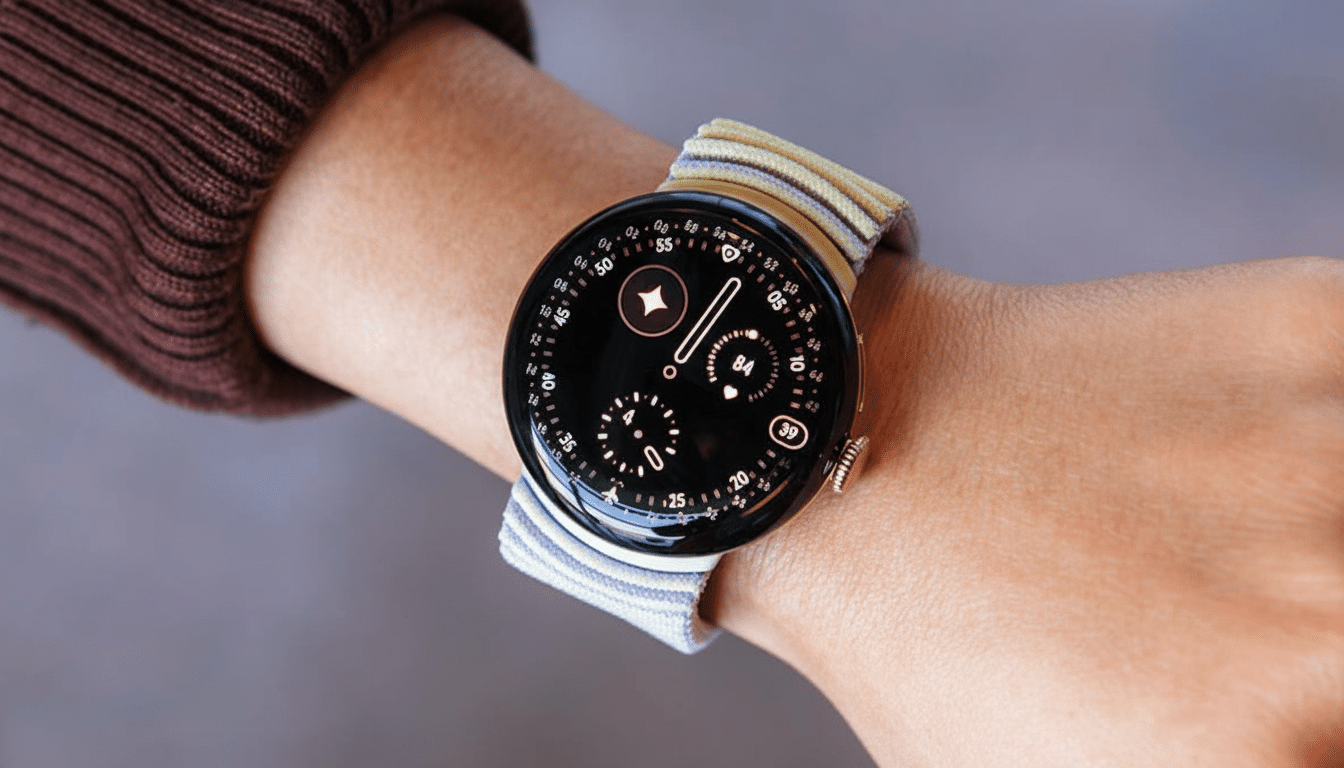Smartwatches are seldom celebrated for being easy fixes, but a new teardown from iFixit hails the Google Pixel Watch 4 as the most repairable on sale. In an industry where small parts are glued in clusters, this watch favors screws, seals, and serviceability — and it shows in the score: 9 out of 10 for repairability — the highest score by far any one watch has gotten.
Why This Teardown Matters for Repairable Wearables
Wearables, meanwhile, have become an infamous source of e-waste, as their batteries die long before the rest of them do. That’s according to the United Nations’ Global E-waste Monitor, which details tens of millions of tons of electronics entering the trash and recycling rates that are falling short. It’s not just a novelty; it’s a template for how such products should evolve, and how they should be serviceable by their owners rather than disposable.
- Why This Teardown Matters for Repairable Wearables
- The Breakthrough Is Screws, Not Glue, Enabling Easy Repairs
- Water Resistance Without the Usual Glue Tax or Trade-offs
- A Repair-First Philosophy Inside the Pixel Watch 4
- How It Compares With Rivals Like Apple and Samsung
- Why Repairability Is Becoming a Feature Consumers Expect
- What Owners and Repair Shops Get From This Design
- The Bigger Signal to the Industry on Smartwatch Design
- Bottom Line: Pixel Watch 4 Sets a New Bar for Repairs

The Breakthrough Is Screws, Not Glue, Enabling Easy Repairs
The iFixit team notes a key but simple design decision: visible fasteners instead of adhesive now hold most of the watch components in place. Getting to the battery requires three Torx Plus bits, a spudger, and tweezers — typical rather than proprietary tools. There’s no fishing for hidden screws down under delicate trim; the road to service is clear, eliminating the possibility of accidental damage and cutting repair times dramatically.
Water Resistance Without the Usual Glue Tax or Trade-offs
Water resistance is usually the chief argument against repairable wearables. Google’s solution avoids that trade-off by surrounding each external screw with a dedicated O-ring. That gasket treatment also allows for the watch’s IP68 rating to remain in force for both dust and water, with no reliance on permanent adhesives. It’s a type of mechanical seal that has been around for years as part of traditional watches, tweaked for use with modern electronics.
A Repair-First Philosophy Inside the Pixel Watch 4
Inside, the layout is conducive to a repair-first approach: components all separate beautifully, connectors are easy to access, and the battery swap doesn’t require applying lots of heat or soaking in solvent first — a welcome change from the usual.
In practice, that means fewer steps to access parts most likely to fail and more chances to repair — rather than replace — the whole device.

How It Compares With Rivals Like Apple and Samsung
Apple’s watches, not least its latest Ultra model, are stunning feats of miniaturization but remain held together with strong adhesives and knotty disassembly sequences that raise the barrier to routine service. This is roughly how Samsung and other Android-compatible watches work as well. The Pixel Watch 4, on the other hand, with its simple construction and high iFixit rating, has raised the bar for wearables — and a public litmus test that consumers can relate to.
Why Repairability Is Becoming a Feature Consumers Expect
Policy pressure adds momentum. In the United States and Europe, where consumer right-to-repair movements are gaining traction, manufacturers are being pushed to be more generous with parts and documentation that allow for maintenance. The U.S. Federal Trade Commission is advocating against restrictions on repair, and European rules requiring specific durability measures and battery replacement access are nudging electronics toward longer service lives. In that light, a watch made to be opened and reclosed is not merely good engineering — it’s future-proof thinking.
What Owners and Repair Shops Get From This Design
The immediate win for owners is battery service. Since lithium cells decline in a predictable way, and swapping can be fast and low-risk, it will extend the period of useful life of the watch by years. Independent repair shops win as well: visible screws, standard bits, and predictable sealing mean less overhead and faster turnarounds. That ecosystem impact — more devices repaired, fewer discarded — adds up to real-world environmental and economic benefits.
The Bigger Signal to the Industry on Smartwatch Design
The Pixel Watch 4 proves that premium wearables no longer have to be either sexy or utilitarian in build-out. If Google can manage IP-rated durability and strong repair scores, competitors can too. The next step would be consistency: keeping parts on hand, publishing clear repair guides, and maintaining a pipeline of replacement parts for common failures that leave watches disabled long before they ought to be.
Bottom Line: Pixel Watch 4 Sets a New Bar for Repairs
The iFixit teardown has the feel of instructions on how to build a smartwatch. With screws in place of glue and intelligent sealing all around, the Pixel Watch 4 sets the new bar for repairable wearables. It’s a victory for users and an ever-so-slight nudge to an industry that has forced repairability to be nothing more than an afterthought.

